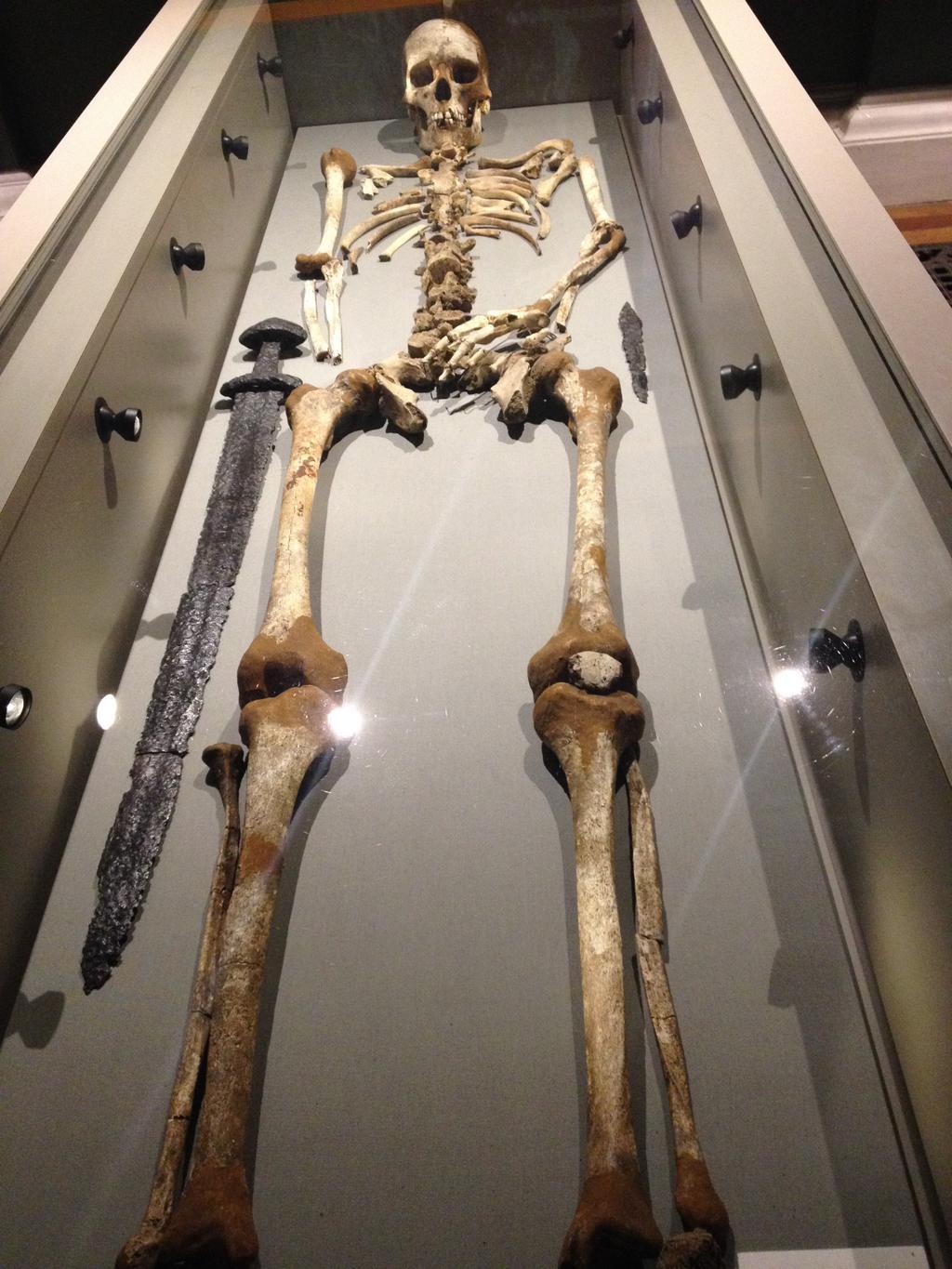Forensic Case Files: Viking Shieldmaidens, or How Forensic Anthropology Changed Our View of History
/ Nineth century Viking burial with sword and knife from Memorial Park, Islandbridge; Dublin, Ireland.It’s not very often that I rant about science, but, oh boy, the story that caught my attention this past week totally set me off. As a career scientist, my day job is all about having a hypothesis and then setting out to prove (or disprove) it. Sometimes you don’t get the results you thought you’d get, but, as I tell my grad students, your results are your results. They’re not wrong, they just are. If you included all of the appropriate controls and conducted the experiment properly at least twice, then this is the truth of the science. You don’t convince yourself of something; instead, the data leads the way to the study’s end result. This is how objective science works. Period.
Nineth century Viking burial with sword and knife from Memorial Park, Islandbridge; Dublin, Ireland.It’s not very often that I rant about science, but, oh boy, the story that caught my attention this past week totally set me off. As a career scientist, my day job is all about having a hypothesis and then setting out to prove (or disprove) it. Sometimes you don’t get the results you thought you’d get, but, as I tell my grad students, your results are your results. They’re not wrong, they just are. If you included all of the appropriate controls and conducted the experiment properly at least twice, then this is the truth of the science. You don’t convince yourself of something; instead, the data leads the way to the study’s end result. This is how objective science works. Period.
Recently, researchers at the University of Western Australia decided that previous research teams weren’t being specific enough in their study of Viking remains. The research concerned graves found in England dating back to Viking invasions prior to the 10th century. It was believed that the overwhelming proportion of Vikings migrating to England at the time was male, with only a very few females in the party, often identified as camp followers. But personal and place names from the area as well as modern mitochondrial DNA relating back to that time implied that there must have been more women present than originally thought. Shane McLeod (currently at the University of Sterling) decided to study that disconnect more closely.
Previously, when examining remains within Viking graves, archeologists sexed the occupants simply by their grave goods—the presence of buried weapons indicated male remains, while females were identified by a traditional oval brooch. Some of this research was done before the science of osteology became well-established, but some publications dating into the 21st century still use grave goods as the only method of sexing remains. Despite having the knowledge at their fingertips to sex the remains based on well-established osteological markers—sex determination from either the skull or the pelvis—they based their conclusions that Viking invaders/warriors were comprised only of males from a superficial examination of the graves.
However, when the University of Western Australia team went back to actually examine the bones themselves, they determined that a full fifty percent of Vikings buried with weapons were actually women. Surprise!
A hundred years ago, it was not possible to use forensic anthropology techniques to determine skeletal age because the science was in its infancy and wasn’t understood to any great extent. But today, there is absolutely no reason to make gender-biased assumptions instead of stating scientific fact because the research team is only looking at part of the picture. Now, to be fair, sometimes remains are degraded because of age and weathering, but for remains with clear osteological markers, there is no excuse for not completing a full examination. In this case, out of the 14 skeletons examined, 6 were determined to be female, 7 were determined to be male, and only 1 was indistinguishable due to degradation of the remains.
Many saw this result as the battle cry of the Viking shieldmaiden. While the fact that some of the women were buried with weapons isn’t conclusive evidence of those same women fighting on the battlefield, the lack of grave weapons is also not conclusive that a particular woman was not a shieldmaiden. That part of the story is yet to be resolved. However, what is clear is that the current overwhelming view of men as the only Viking invaders of England is not correct. Thanks, forensic anthropology, for clearing that up!
Photo credit: Carrie Morgan



 82.0%
82.0%